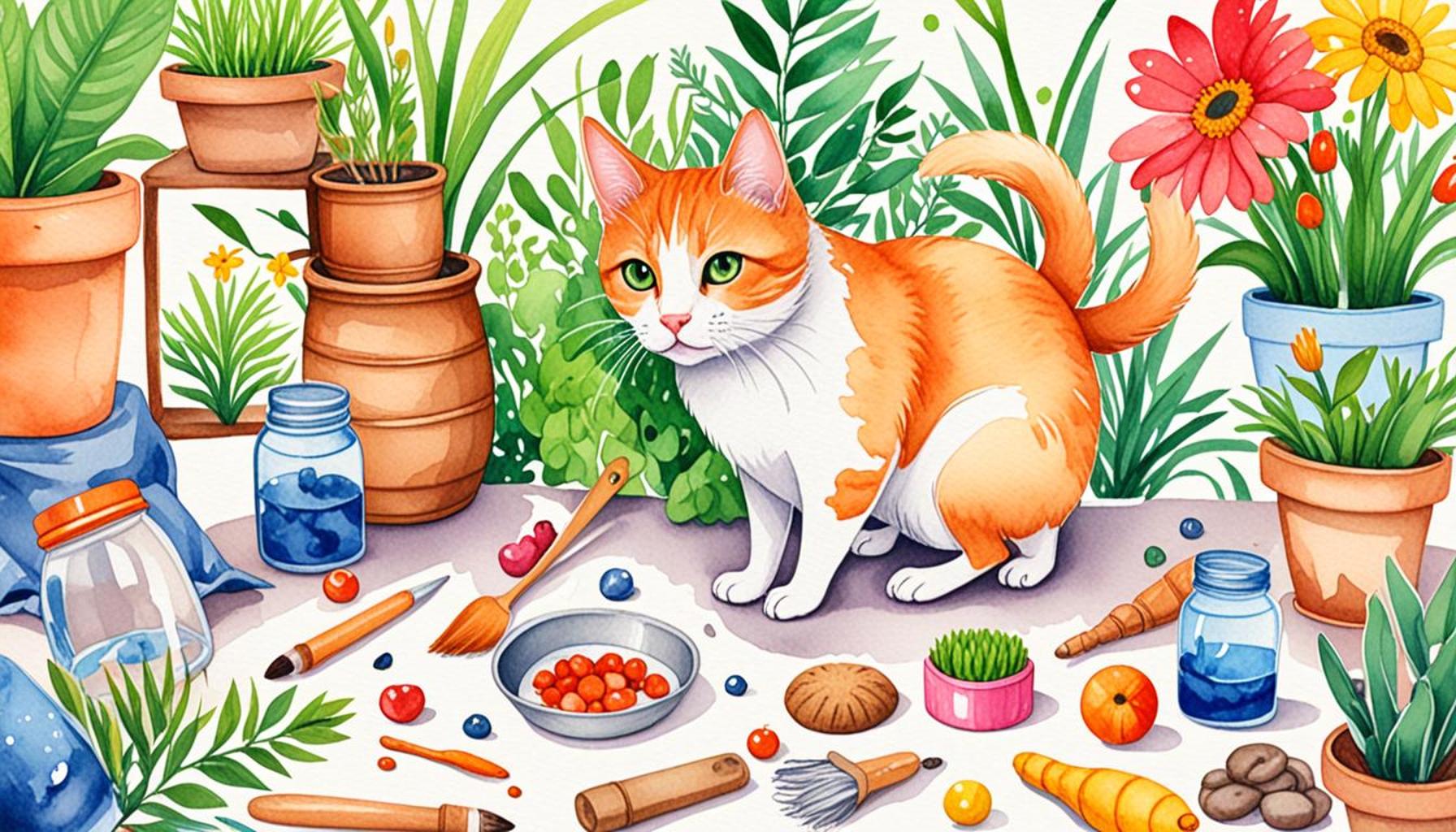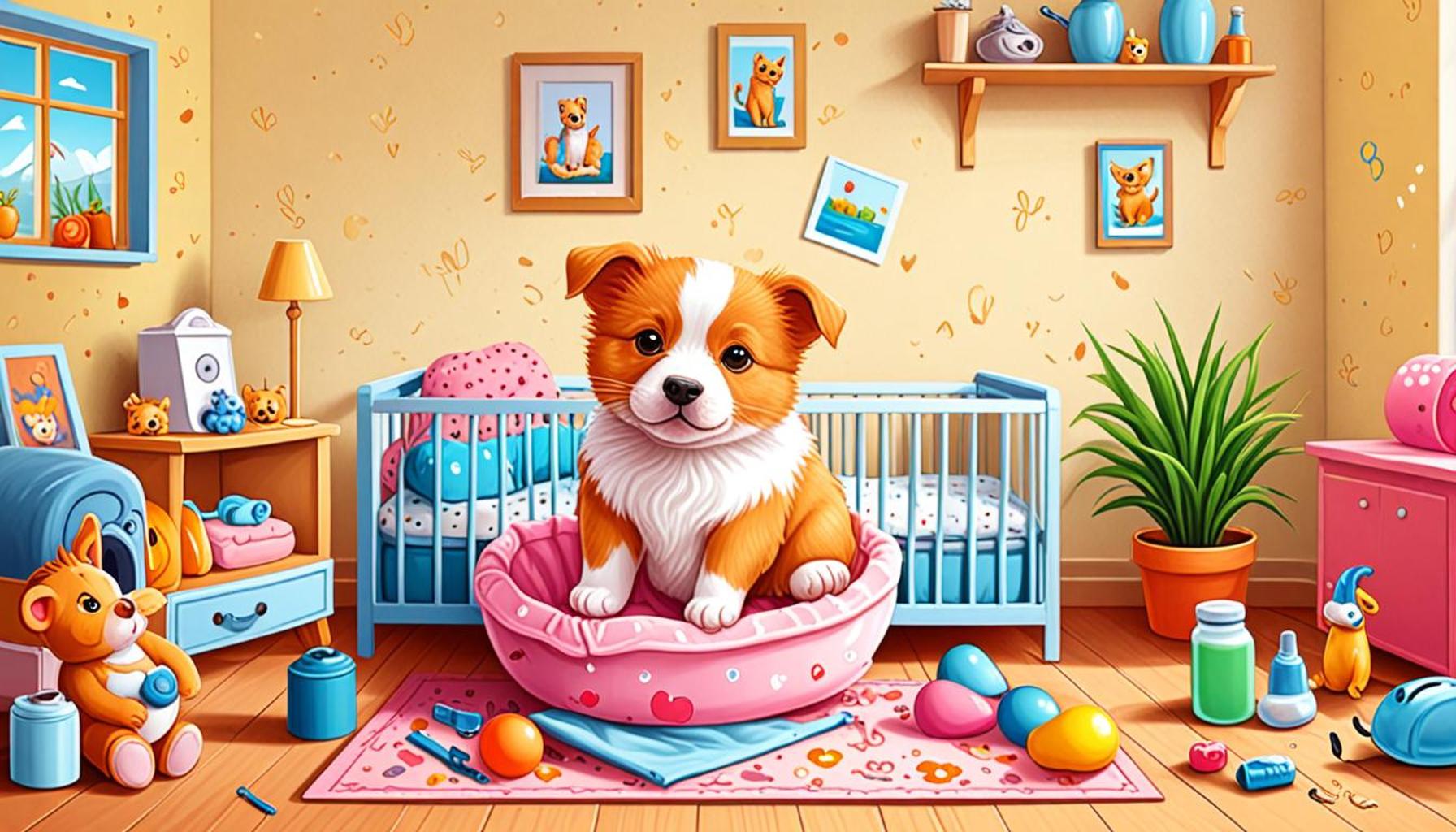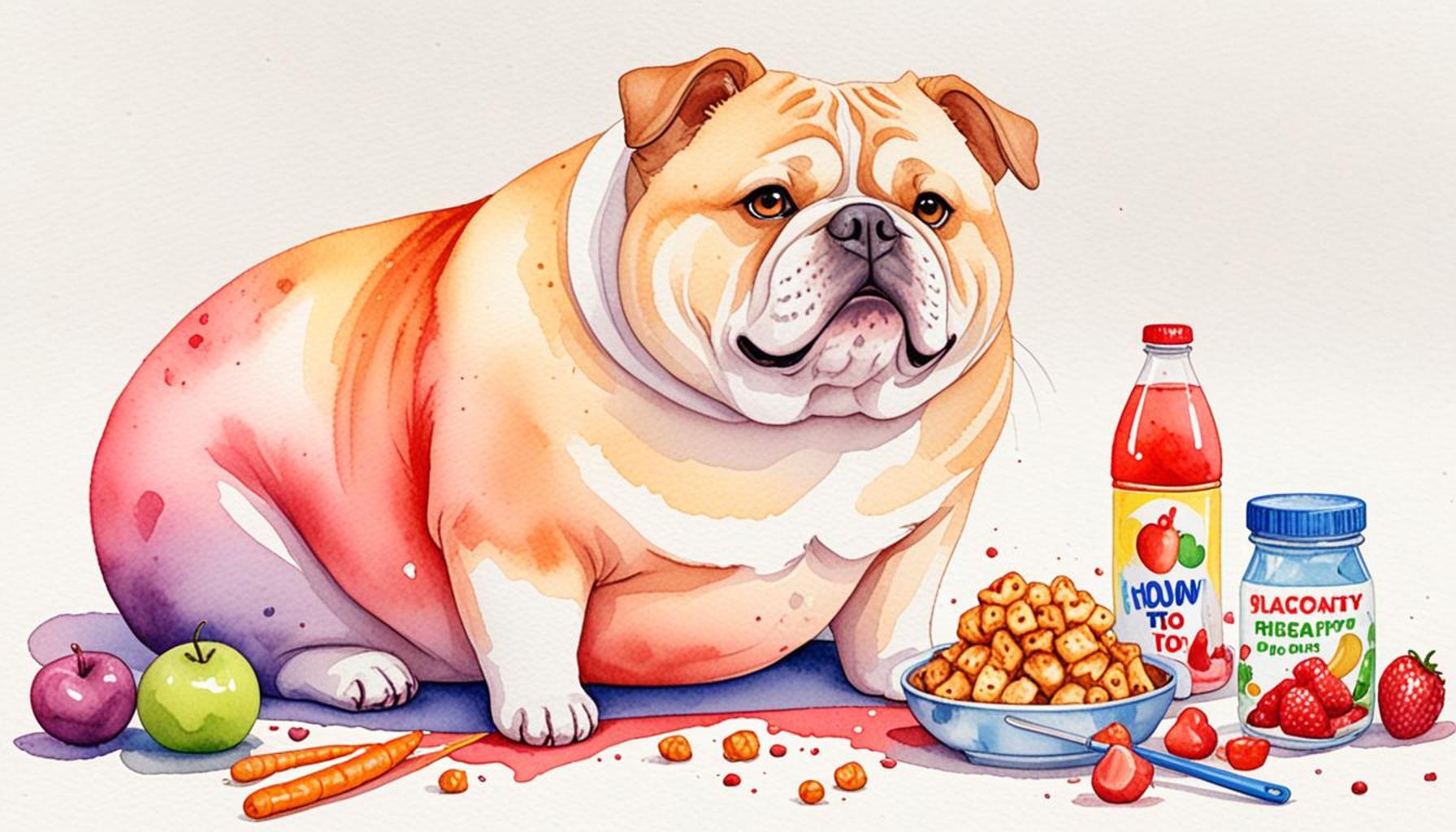Pet Environment Enrichment Top In-Home Strategies for Happy Pets

Creating a Thriving Space for Your Pets
In today’s world, pet ownership has significantly evolved, transcending the traditional notion of merely providing food and shelter. Contemporary pet owners are becoming increasingly aware of the importance of cultivating an enriched environment that stimulates their furry, feathered, or scaly companions both mentally and physically. With pets being integral members of the family, their well-being is prioritized, akin to that of any cherished loved one.
Enhancing your pet’s living space goes far beyond a simple assortment of toys scattered about. It’s about crafting an atmosphere that bolsters their well-being and fosters happiness. A well-conceived habitat does more than just prevent behavioral challenges; it also strengthens the bond between owner and pet. Just as humans thrive in a vibrant, welcoming home, animals also benefit from an environment that caters to their natural instincts and comfort needs.
Top 5 Strategies for Enriching Your Pet’s Environment
In this article, we will delve into the Top 5 strategies for transforming your pets’ living quarters into an engaging, stimulating space. These tips extend beyond the ordinary and are designed to unlock the full potential of your pet’s habitat. By implementing these strategies, you can ensure a vibrant space that not only meets but exceeds your pets’ instincts and needs, leading to a content and healthy life for your beloved companions.
- Interactive Toys: Invest in toys that challenge pets mentally, such as puzzle feeders and treat-dispensing toys, which can keep them entertained for hours.
- Natural Elements: Incorporate elements like plants or water features that mimic their natural habitat, creating a serene and engaging environment.
- Vertical Spaces: For pets like cats, who love to climb and explore, installing shelves or perches can add dimension to their living area.
- Safe Outdoor Areas: Secure outdoor spaces encourage exploration and exercise, which are essential for maintaining their physical health.
- Routine and Variety: Structure and daily routines provide security, while varied activities keep pets eager and engaged.
The end goal of these strategies is to craft a living space where pets can thrive peacefully while their owners watch them grow happily and healthily. As you begin implementing these ideas, you will not only ignite a sense of curiosity in your pet but also foster a deeper connection between the two of you. The journey to creating
DISCOVER MORE: Click here to learn how to welcome a cat into your home

Top 5 Strategies to Enrich Your Pet’s Home Environment
Ensuring a pet’s home environment is both engaging and mentally stimulating is imperative for their overall well-being. From active dogs to curious cats, and from playful rabbits to inquisitive hamsters, every pet deserves a home setting that supports their mental and physical health. A richly varied environment can significantly improve your pet’s quality of life, providing opportunities for both exploration and comfort. In this article, we delve into the top five strategies for enhancing your pet’s living conditions, promoting physical activity, mental stimulation, and emotional well-being to create a happier, healthier companion.
5. Activity Toys
Activity toys are more than just entertainment; they are a gateway to a world of mental challenges and physical exercises that delay monotony. Such toys have revolutionized how pets interact with their surroundings, introducing tasks that engage their natural instincts.
- Puzzle Feeders: These ingenious contraptions turn feeding time into a complex task. Pets must solve puzzles to earn their food, tapping into their problem-solving skills. Imagine a cat maneuvering through a maze with its paw or a dog nudging sliders with its nose—both scenarios captivate and challenge, leading to increased mental sharpness.
- Interactive Balls: Not just any rolling object, these balls dispense treats after a calculative maneuver. Whether it’s a rabbit hopping along to get its favorite snack or a hamster tackling the ball’s movement, the element of surprise keeps them engaged and encourages continuous play.
- Chew Toys: Initially simple-looking, these toys serve a dual purpose. They not only support dental health but also cater to the natural chewing instincts found in many species. From puppies teething to adult dogs managing stress, a trusty chew toy can offer hours of distraction and contentment.
Investing in a diverse collection of activity toys keeps a pet’s curiosity alive while ensuring their mind remains sharp and active. These toys form a critical part of your enrichment arsenal, providing endless avenues for exploration and satisfaction.
4. Sensory Exploration
Beyond physical play, engaging a pet’s senses opens up an entirely new avenue for enrichment. Sensory exploration exploits the heightened sensory perceptions our pets rely on, offering them a dynamic interaction with their environment.
- Scent Trails: Utilize the powerful olfactory senses of your pets by creating scent trails using exciting, safe materials such as herbs or specialty pet scents. Watching a dog or cat trail a scent across familiar grounds can reignite their natural instincts to hunt or explore, which enhances their spatial awareness.
- Taste Tests: Introducing your pet to new, pet-safe foods in small quantities can diversify their palate while providing necessary nutrients. For instance, offering bite-sized vegetables to rabbits or unique fruits to birds can break the monotony of standard diets and excite mealtime.
- New Textures: An infusion of different textures—soft, rough, or even prickly—invites pets to investigate their surroundings in unique ways. An adventurous ferret might relish navigating through a crinkly paper path, while a cat might find a sheepskin rug a delightful nap zone.
By regularly updating these sensory inputs, you maintain a thriving and stimulating atmosphere that encourages curiosity and imaginative play, reinforcing your pet’s bond with their living space.
3. Safe Outdoor Access
Connection with nature can significantly enhance a pet’s lifestyle by presenting an expansive realm for discovery. For many pets, the great outdoors is an endless canvas of sights, sounds, and scents that can invigorate and rejuvenate them.
- Secure Fencing: Creating a safely fenced outdoor area allows pets to roam uninhibited while maintaining safety. A well-designed enclosure can provide your dog or rabbit bedding, shade, and enough variety in landscape to mirror a natural habitat.
- Leashed Walks: More than just exercise, leashed walks introduce pets to new environments and social opportunities. Exposure to different terrains stimulates physical senses, while varied environments can decrease anxiety and offer educational moments.
- Supervised Time: Letting pets have supervised time in a yard can be refreshing. Amidst chirping birds and rustling leaves, a cat might engage in playful pounces, while a guinea pig may wander contentedly.
Outdoor access not only fulfills essential exercise needs but also diminishes behavioral challenges that arise from confinement. Embracing the outdoors positions your pet to enjoy a holistic experience filled with activity and adventure.
2. Social Interaction
Social interaction is pivotal for pets, who often thrive in environments where they can connect with others. Whether it’s through their human family members or fellow animals, these social bonds are foundational to a pet’s emotional health.
- Play Dates with Other Pets: Engage your pet in regular playdates, as interaction with other animals provides learning experiences and builds confidence. Dogs in particular benefit greatly from social contact, building both their social skills and temperament.
- Family Time: Dedicate specific moments to simply be with your pet. Whether it’s a leisurely nap on the couch together or playful sessions, quality time fortifies the trust and friendship between you.
- Training Sessions: Engage in regular training sessions, introducing new tricks and skills. For example, rallying your dog to learn agility movements or teaching your parrot new phrases stimulates their cognitive functions, while simultaneously deepening your relationship.
Each form of engagement nurtures your pet’s internal security and provides a sense of belonging, ensuring overall happiness and satisfaction in their home environment.
1. Creative Enrichment Activities
At the pinnacle of enrichment strategies are creative activities tailored to inspire both mental and physical stimulation. These activities are vital as they push the boundaries of what pets can achieve and explore in a familiar setting.
- Obstacle Courses: Crafting obstacle courses from everyday objects can turn a dull corner into an exciting play zone. Dogs may leap through hula hoops, while cats might dart through tunnels. Such setups ignite their whimsical side and improve agility.
- Hide and Seek: A simple game of hide-and-seek can transform your living room into a game board of suspense and thrill. Muffled giggles and soft taps of pet paws provide an engaging pastime for both owner and pet.
- Art Projects: Consider interactive projects that serve dual purposes, such as creating paw prints with non-toxic paints. The end result is not just a fun activity but also a keepsake that cements shared moments of joy and creativity.
By implementing these imaginative activities, you are not just filling your pet’s time. You are weaving experiences that embolden their sense of adventure, ensuring day-to-day life is vibrant and enriching.
Incorporating these five strategies into your pet’s life promotes an enriching, animated living space. Each segment of this holistic approach—activity toys, sensory exploration, outdoor exposure, social interaction, and creative activities—offers elements of physical and mental stimulation that drastically improve your pet’s overall quality of life. Embrace these options, and witness your furry companion thrive in their enriched home landscape.
| Category | Benefits |
|---|---|
| Interactive Toys | Engaging toys stimulate the mind, promoting cognitive skills and challenging pets to problem solve, preventing boredom. |
| Varied Environments | Creating different zones within a home keeps an animal’s senses engaged. This diversity in space can reduce anxiety and aggressive behaviors. |
| Natural Elements | Incorporating plants and natural materials in the environment encourages exploration and provides a sensory-rich experience that mimics their natural habitats. |
| Routine Enrichment Activities | Through regular activities such as training sessions and interactive playtime, pet owners foster a bond with their pets and enhance their physical well-being. |
DISCOVER MORE: Click here for expert tips on stress-free road trips with your cat
Frequently Asked Questions About Enriching Pet Environments at Home
What is meant by “enriching” a pet’s environment?
Enriching a pet’s environment refers to the practice of enhancing the home setting to better meet the behavioral and physical needs of pets, thereby improving their quality of life. This can include providing a variety of toys, interactive games, spaces for exploration, and opportunities for mental stimulation. Environmental enrichment is crucial for preventing boredom and promoting natural behaviors in animals.
Why is it important to enrich the environment for pets?
Environmental enrichment is vital because it can help prevent a range of issues such as anxiety, stress, and destructive behaviors that often arise from boredom or lack of stimulation. According to various studies, pets with enriched environments show improved cognitive functions and general well-being. This approach not only benefits their mental health but also contributes to their physical health by encouraging them to be more active.
What are some simple ways to enrich my pet’s environment?
Some simple and effective methods include providing a variety of toys that cater to your pet’s natural instincts, such as scratching posts for cats or puzzle feeders for dogs. Creating special areas where your pets can safely explore or hide is also beneficial. Engaging in interactive play sessions and incorporating training sessions can further enrich their experience. Consider using stimulating tools like scent trails or treasure hunts to engage their senses.
Can environmental enrichment help with behavior problems?
Yes, many behavior problems in pets are often linked to boredom or lack of stimulation. By enriching a pet’s environment, you can address underlying causes of problems such as excessive barking, chewing, or scratching. Providing a more stimulating environment can lead to positive changes in behavior by giving pets alternative activities that fulfill their needs and prevent them from resorting to unwanted behaviors.
How often should I change or update enrichment activities?
It’s important to regularly update or rotate enrichment activities to maintain your pet’s interest and challenge them in new ways. This can be done weekly or bi-weekly, depending on your pet’s engagement level. Regular updates prevent activities from becoming predictable, ensuring that they remain engaged and mentally stimulated. Observing your pet’s reactions will help determine the appropriate frequency for changing their activities.
DON’T MISS OUT: Click here for expert tips on stress-free road trips with your cat
Conclusion: Enriching the Home Environment for Pets
As pet owners, ensuring that our animals live fulfilling and stimulating lives is a vital commitment. By applying a variety of strategies to enrich their home environments, we not only contribute to their happiness but also promote their mental and physical well-being. The key takeaways from our discussion highlight the importance of these enriching activities for pets of all kinds.
Firstly, incorporating interactive toys and puzzles can foster mental stimulation and ward off boredom. Pets need challenges to engage their minds, and these tools are excellent for creating such opportunities. Secondly, the introduction of varied textures and multi-sensory experiences within the home can dramatically enhance their exploratory behavior, satisfying their natural instincts.
Furthermore, providing a structure of regular playtime and exercise is crucial. This not only aids in maintaining their physical health but also strengthens the bond between pet and owner. Equally important is ensuring your pet has access to safe outdoor spaces or simulated environments inside the home, such as indoor gardens or perches that mimic trees for those pets that thrive on such experiences.
Finally, don’t underestimate the power of social interaction, whether it be with other animals or people, as this can significantly impact their emotional balance. As we strive to enrich our pets’ environments, it becomes clear that a multifaceted approach is necessary, involving physical, mental, and social aspects to nurture their overall well-being.
The significance of enriching their environments cannot be overstated. By looking into these strategies, pet owners might discover the profound impact they can make on their pets’ lives, offering them a more vibrant and content existence. As our understanding of enrichment deepens, we continue to open doors to new ideas and innovative ways to improve the quality of life for our cherished companions.


